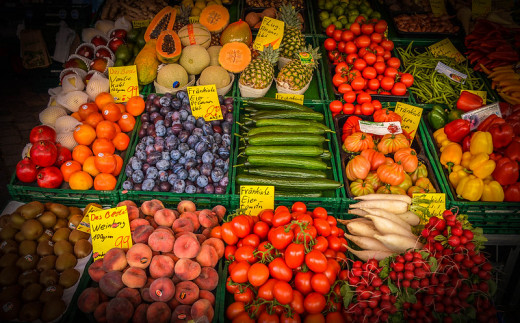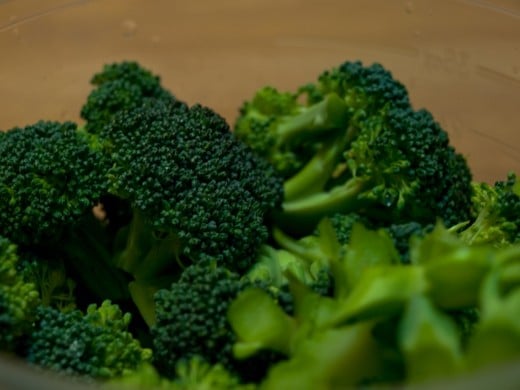Top 3 Tips for Vegetable Haters In Your Family
For many thousands of years, humans have reaped the benefits of eating fresh fruits and vegetables. For the most part, the latter is often on the black-list of those who are either picky or hate the texture or taste of them.
One of the age groups who are picky about their eating are the pre-adolescents, who rather want to stick to hot dogs and hamburgers than the "yucky" broccoli and spinach. (Don't get me wrong! I have seen my fill of kids on the media turning up their noses at a green vegetable that's supposed to be good for them.)
Many of us fell short of the nutrition guidelines of at least 5 to 9 fruits and vegetables a day. I think that part of the problem is that people dislike the taste of the latter. So why do most of us hate eating vegetables, even though they make us strong and healthy to begin with?

The Whys of Vegetables and Why Many Loathe Them
There are many reasons why vegetables are just as jolly good for you as their sweeter, more appetizing counterparts - fruits. First of all, they contain a lot of fiber and water, which fills you up and keeps you from pigging out later. (For the water part, as well as being naturally low in calories, they help you lose weight.) When consumed regularly, you can get at least nearly as much vitamins and minerals as some OTC vitamin pill.
With fruits, eating vegetables regularly can help you get smarter and be able to learn and keep new information better, cited a study in the Journal of Alzheimer’s Disease, because they have all those antioxidants. (They are great for lowering the risks of heart disease, hypertention, and loads of cancers for the same reason.) They are an integral part of the so-named Mediterranean diet, which also includes fatty fish, olive oil, and nuts.
But despite the benefits of eating vegetables (as well as fruits), why don't many of us (kids included) eat them? A big factor in our hatred towards plant foods is the way it looks - for kids, they think that anything green is considered "yucky." Whenever you serve them anything healthy and green (think spinach and broccoli, two of the vegetables with the greatest "yuck" factor), they put it in their mouths and gag while chewing it. That leads to two other factors in our dislike for the healthiest of food groups: texture and smell.
Take Brussels sprouts, for example - once out of the steamer, they smell fragrant (as in smelly-plant fragrant), and once you eat it, they taste bitter. For kids, they think that if a vegetable looks yucky, chances are that it feels and tastes yucky in their little mouths. This is especially true with kids who are autistic because they mainly have so many sensory sensitivities to live with.
Another reason why vegetables seem unappealing taste-wise is because sweet tastes of fruit and candy appeal to children (and most adults) more than them.
For More on Vegetable Benefits
Ugh - Gross!

Three Ways to Fight Vegetable Resistance
You serve your family a dish with vegetables, but your members simply push it away. You repeat the commands and comments, "Eat your broccoli," "just four bites," and "it'll make you strong and healthy." You simply give up and have them eat what they really wanted that doesn't have the vegetables. But there are ways to inspire your vegetable-hating crowd to eat more.
- Call A Tomato A TOE-MAY-TOE
Don't just sit your family down and give them a tomato (which is actually a fruit that is eaten like a vegetable) - use a snappy name for it! In fact, a Cornell University study found that children who ate carrots that are branded as "X-Ray Vision Carrots" ate twice as much as the ones just labeled "carrots."
A similar study for adults showed that they spend more money and more positive reviews on taste when a restaurant dubbed a seafood dish, "Succulent Italian Seafood Fillet." If your family usually associates cucumber slices as those rather placed on the eyes during a facial, dub them "Beauty Cucumber Circles" to have them eat more. - Grow a Veggie Garden Plot
If your family is so involved with doing something with you involving the once-dreaded vegetables, chances are that they are likely to eat them. A study showed that children who ate fruit and vegetables grown at home are twice as likely to eat the recommended five servings of them a day. So why not schedule a time when the family sows their seeds and enjoy their prized bounties together - doing so makes eaters less picky. - Hide Your Vegetables
It's one of the best ways to introduce your family to vegetables without them considering their "yuck" factor - find ways to incorporate vegetables in their favorite foods. Before you think that there's no research to back up this trick, consider this. Researchers found that when they pureed broccoli and added it into their tomato sauce, the children ate the same amount of pasta as much as the amount that does not have the vegetable.
Also, remember that introducing your family to vegetables takes time - it takes as much as ten tastes to make them actually eat the whole thing.
How Do You Get Your Family To Eat Vegetables?
© 2010 talfonso








